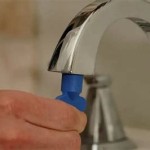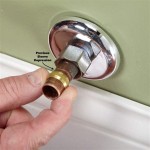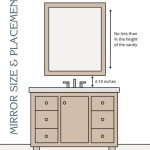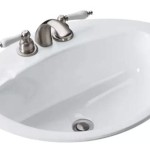How to Remove Bathroom Exhaust Housing
Bathroom exhaust housing, also known as a vent hood or fan housing, plays a crucial role in maintaining proper ventilation and preventing moisture buildup in the bathroom. Over time, the housing can become dirty, damaged, or outdated, requiring removal and replacement. This article provides a step-by-step guide on how to remove bathroom exhaust housing safely and efficiently.
1. Gather Necessary Tools and Materials
Before starting the removal process, ensure you have the necessary tools and materials:
- Screwdriver (Phillips and flathead)
- Ladder (if needed)
- Work gloves
- Safety glasses
- Dust mask
- Trash bags
- New exhaust housing (optional)
2. Turn Off Power and Disconnect Wiring
Safety is paramount. Before working on the exhaust housing, turn off the power to the fan at the circuit breaker. Locate the electrical wiring connected to the fan motor. Disconnect the wires carefully, taking note of their position for reconnection later. Label the wires if necessary.
3. Remove the Fan Cover and Housing
The exhaust housing is typically attached to the ceiling or wall with screws. Use a screwdriver to remove these screws. Depending on the model, there might be additional clips or fasteners securing the housing. Once the screws are removed, gently detach the housing from the fan motor. If there are any clips, carefully release them.
4. Disconnect the Ductwork
The exhaust housing connects to the ductwork that carries moisture and air outside. Disconnect the ductwork from the housing. This may involve removing clamps or flanges. Be careful not to damage the ductwork during this process. If the ductwork is made of flexible materials, ensure it is properly secured to prevent sagging or collapsing.
5. Remove the Fan
After disconnecting the ductwork and wiring, you can remove the fan motor itself. Typically, the fan is secured with screws. Remove these screws and gently lift the fan out of the housing. Be careful not to damage the fan blades.
6. Clean the Area
Before installing a new exhaust housing, it's essential to thoroughly clean the mounting area. Remove any dust, debris, or old sealant. This ensures a clean and secure installation for the new housing. You may need to use a cleaning solution and cloth to remove stubborn residue. Allow the area to dry completely before proceeding to the next step.
7. Install the New Exhaust Housing (Optional)
If you are replacing the exhaust housing, follow the manufacturer's instructions for installation. This typically involves attaching the new housing to the ceiling or wall using screws or clips, connecting the ductwork, and reconnecting the wiring. Be sure to test the fan to ensure it's working properly.
8. Reconnect Power and Test
Once the new exhaust housing is installed (if applicable), reconnect the wiring, ensuring the wires are correctly matched. Turn on the power at the circuit breaker and test the fan. If the fan is working properly, you've successfully removed and replaced your bathroom exhaust housing.

Help Can T Remove Old Bathroom Exhaust Fan Housing Doityourself Com Community Forums

Not Sure How To Remove Old Bathroom Fan Install New One Doityourself Com Community Forums

How To Replace A Bathroom Exhaust Fan Without Attic Access 12 Step Guide Home Inspector Secrets

How To Replace A Bathroom Fan With Pictures Wikihow

How To Replace A Bathroom Exhaust Fan Without Attic Access 12 Step Guide Home Inspector Secrets

Remove Install A Bathroom Fan Grille In 1 Min

Help Can T Remove Old Bathroom Exhaust Fan Housing Doityourself Com Community Forums

How To Replace A Bathroom Fan With Pictures Wikihow

How To Replace A Bathroom Exhaust Fan Stanley Tools

Help Can T Remove Old Bathroom Exhaust Fan Housing Doityourself Com Community Forums
Related Posts







